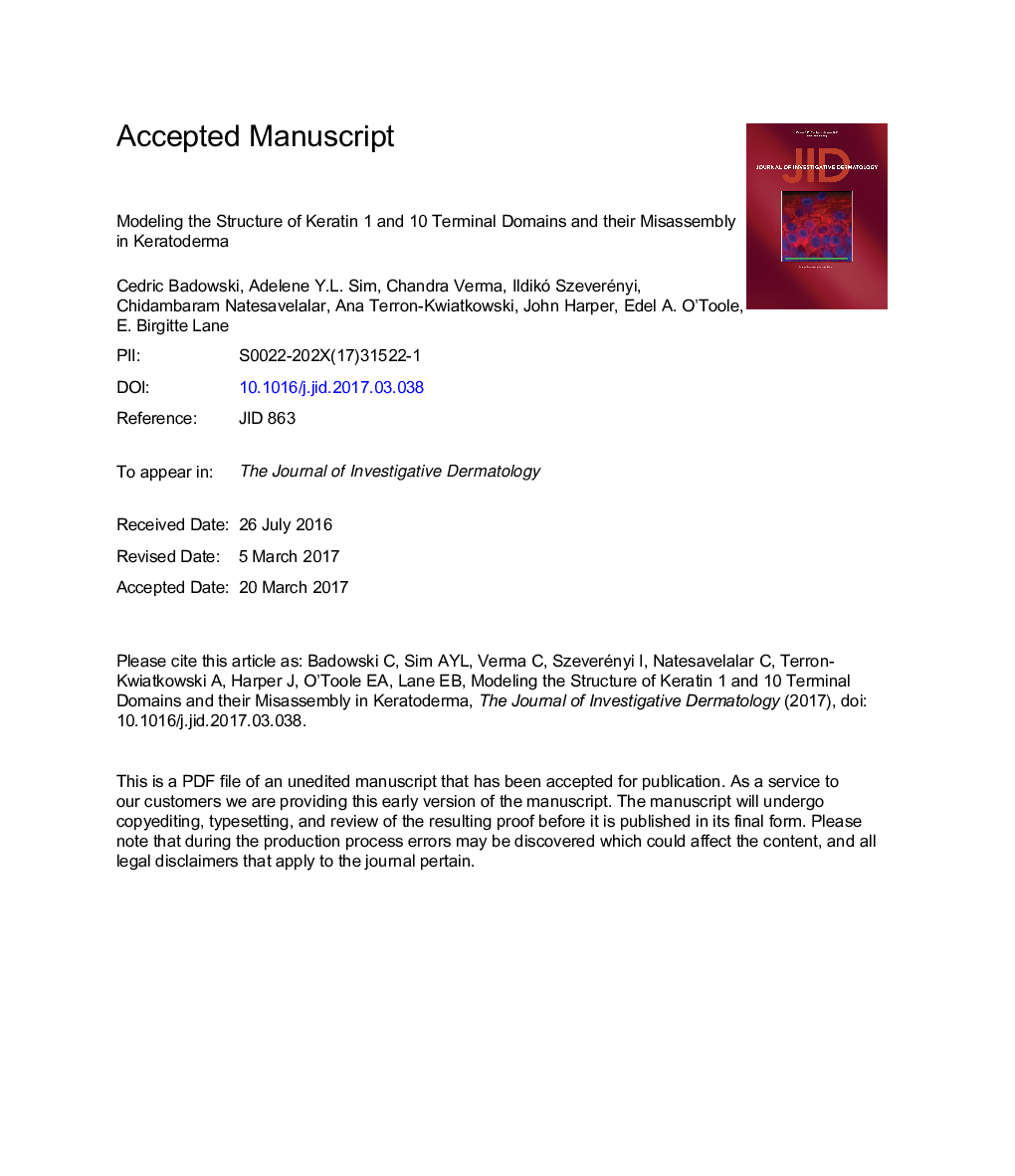| Article ID | Journal | Published Year | Pages | File Type |
|---|---|---|---|---|
| 5649192 | Journal of Investigative Dermatology | 2017 | 29 Pages |
Abstract
The terminal domains of suprabasal keratins of the skin epithelium are very resistant to evidence-based structural analysis because of their inherent flexibility and lack of predictable structure. We present a model for the structure and interactions of the head and tail domains of epidermal keratins 1 and 10, based on all-atom 3D simulations of keratin primary amino acid sequences, and tyrosine phosphorylation predictions, extracted from published databases. We observed that keratin 1 and 10 end domains are likely to form a tetrameric terminal domain complex incorporating a reversibly extendable region potentially acting as a molecular spring. This structure is formed by intermolecular stacking of aromatic residues, which would spatially constrain the keratin 1/keratin 10 end domains to allow filament compaction and bundling, whilst also retaining extensibility to ensure flexibility of the keratin filament network in the differentiating epidermis. The tetrameric terminal domain complex model may also help to elucidate the effects of mutations in the end domains of suprabasal keratins and so contribute to understanding of the mechanisms leading to keratinopathies such as striate palmoplantar keratoderma, as reported in this study.
Related Topics
Health Sciences
Medicine and Dentistry
Dermatology
Authors
Cedric Badowski, Adelene Y.L. Sim, Chandra Verma, Ildikó Szeverényi, Chidambaram Natesavelalar, Ana Terron-Kwiatkowski, John Harper, Edel A. O'Toole, E. Birgitte Lane,
